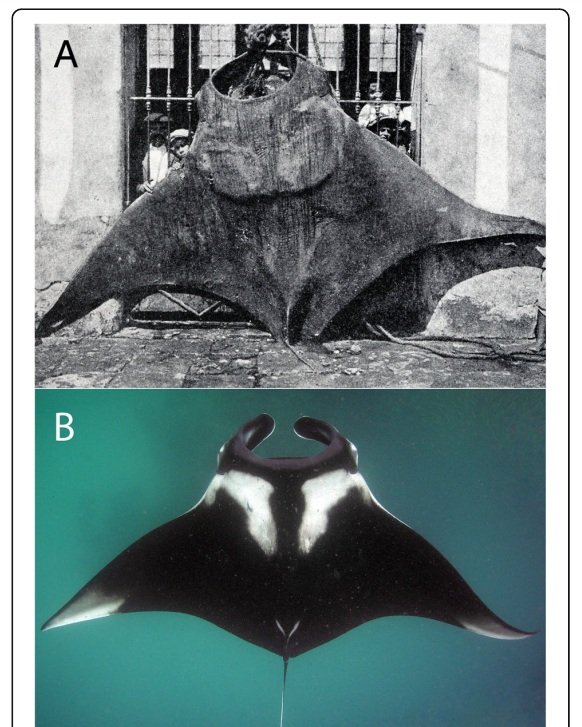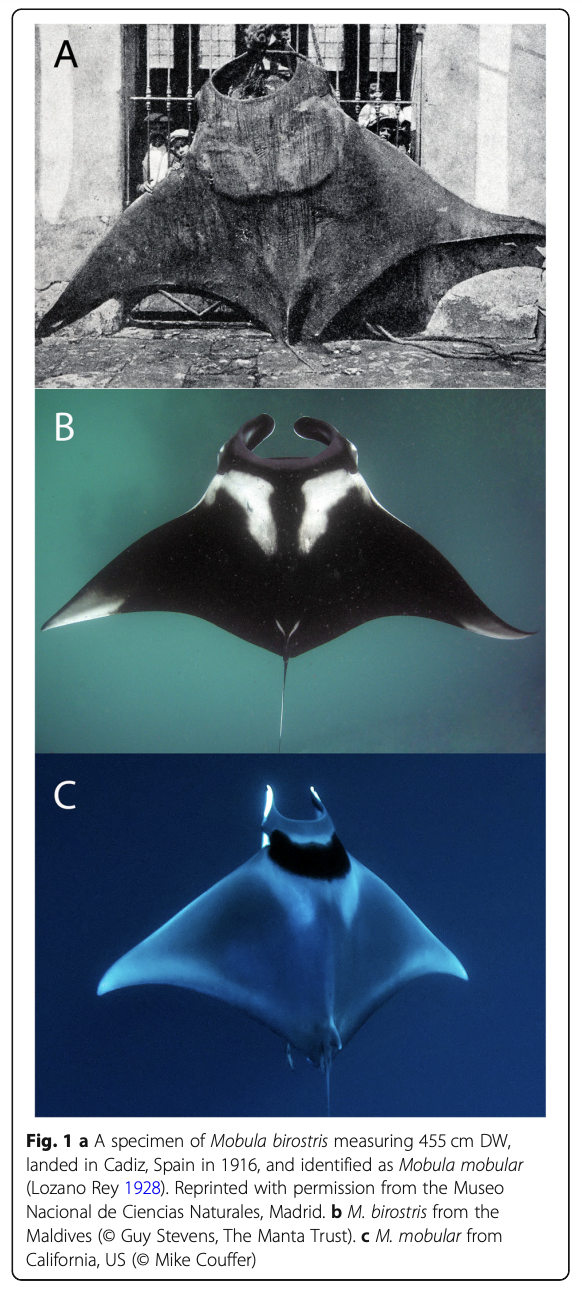The giant devil ray Mobula mobular (Bonnaterre, 1788) is not giant, but it is the only spinetail devil ray
April 2020
Giuseppe Notarbartolo di Sciara, Guy Stevens & Daniel Fernando
Keywords: Mobulids• Manta • Fish Nomenclature • Taxonomic Misidentification


Summary: The mobulid species Mobula mobular, previously believed to be endemic to the Mediterranean Sea, was misidentified as oceanic manta rays. It was mistakenly called the "giant devil ray." However, considering its size (maximum known width of 350 cm), it is not actually giant. A recent taxonomic revision included M. japanica as a synonym of M. mobular, making it a circumglobal species with a tail spine. Therefore, it is recommended to rename M. mobular as the "spinetail devil ray."
Abstract
“Mobula mobular, a mobulid species once considered a Mediterranean Sea endemic, has received its common name “giant devil ray” based on repeated misidentifications of oceanic manta rays, Mobula birostris, that had strayed into the Mediterranean, where they had never been reported from before. Based on the maximum known size (350 cm disc width) of M. mobular, when compared to some of its congenerics, the giant devil ray is not giant at all. A recent revision of the phylogeny and taxonomy of genus Mobula, which included, amongst other things, the decision to consider the circumtropical spinetail devil ray M. japanica a junior synonym of M. mobular, has caused the latter species to become circumglobal, and the only known mobulid with a tail spine. As a consequence, it is here recommended that the common name of M. mobular be “spinetail devil ray”.”
Author Affiliation
Tethys Research Institute
The Manta Trust
Department of Biology and Environmental Science, Linnaeus University
Blue Resources Trust


